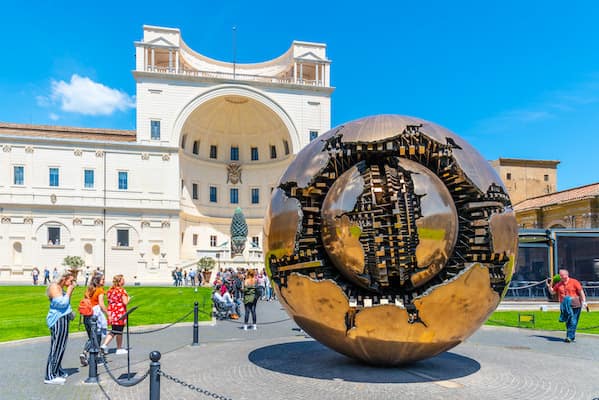The Best Museums in Rome
When visiting the greatest city in Italy, there are a few things to consider before making the trip. Most people visit Rome to see the sights, to breathe in the history thousands of years in the making. If you’re like most people, you’ll be interested in visiting the Colosseum, the Sistine Chapel, St. Peter’s Basilica, and the other iconic landmarks. When seeing the sights, it’s easy for tourists to feast their eyes on marble statues, ancient amphitheatres and creepy catacombs without knowing anything about them at all.
To walk in the footsteps of emperors, warriors, gladiators and popes, is much more rewarding when you learn about the history of everything you’re seeing in front of you.
Museums provide the hands-on experience that makes the learning more fun than reading a history book. To not only witness history in action, but to feel it, to hear it, even to smell and taste it, is what we all travel hundreds of miles and pay hundreds of euros for.
There are few cities as well equipped with history and museums as Rome and the Vatican. Religion, conquest, royalty, politics, rises and falls, tradition, architecture. These are all the reasons why Rome is so iconic.
Should I get a tourist pass? Which one should I get?
This is quite an important planning stage of your visit to Rome which should be carefully considered. There are plenty of blogs, articles and message boards online that can tell you all the ins and outs of each pass. Each pass has its upsides and downsides, all tailor-made for different preferences. Within this list, for the sake of those who are still undecided on which pass to go for (or if they decide not to get a pass), I will include which passes can get you access to which museum. Any other terms or conditions not mentioned on this list can be found on their respective websites.
This is my first visit to Rome. Which museums should I go to?
This list acts as a rating system as to the best quality museums in Rome. Museums are everywhere you turn in this city, so it’s difficult to pin down who should go where. I’d say that if you’re visiting Rome for the first time, or if you’re visiting for the umpteenth time, you should consider this list a rating of the best that Rome has to offer.
The quality of exhibits, the history and design of the building, the location, average customer reviews, even the queueing system are all taken into account. Obviously, this list will omit some people’s favourite museums to visit, but that may be because it’s too obscure or new. I hear great things about the Police Car museum, but I didn’t view it as essential for this list.
With all of this in mind, here is the list of the top museums to visit in Rome!
The Vatican Museums
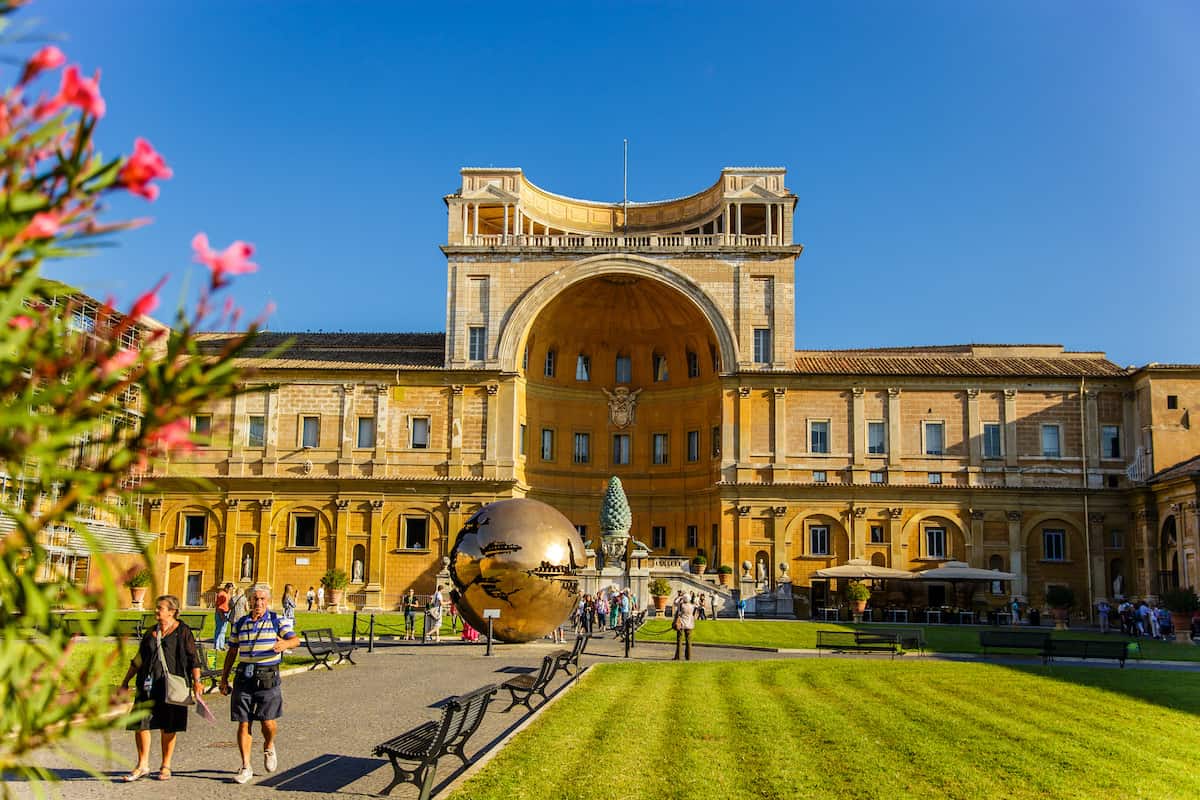
Situated north of the iconic St. Peter’s Basilica in Vatican City, the Vatican Museums is one of the most iconic locations in not only all of Europe, but the world. The ceiling to the Sistine Chapel is on everyone’s bucket list, from 8 year olds to 80 year olds. Depicting episodes from the book of Genesis, the depiction of God creating Adam has been deemed the greatest fresco painting of all time on multiple occasions.
The ceiling, or even the Sistine Chapel itself for that matter, only scratches the surface as to what the museums hold. If you spend a day on the grounds, you’ll lose yourself in its 1,400 different rooms filled with the art collections of Popes from generation to generation. Truly a Louvre of Rome, it’s technically impossible to see every one of its 20,000 treasures in a day. It would be wise to plan your day around the museums and to make a priority list of rooms you’d like to get lost in.
Included with:
- Omnia Pass
- Rome Tourist Card (With an added fee)
- Turbo Pass
- Best of Rome Pass
Galleria Borghese
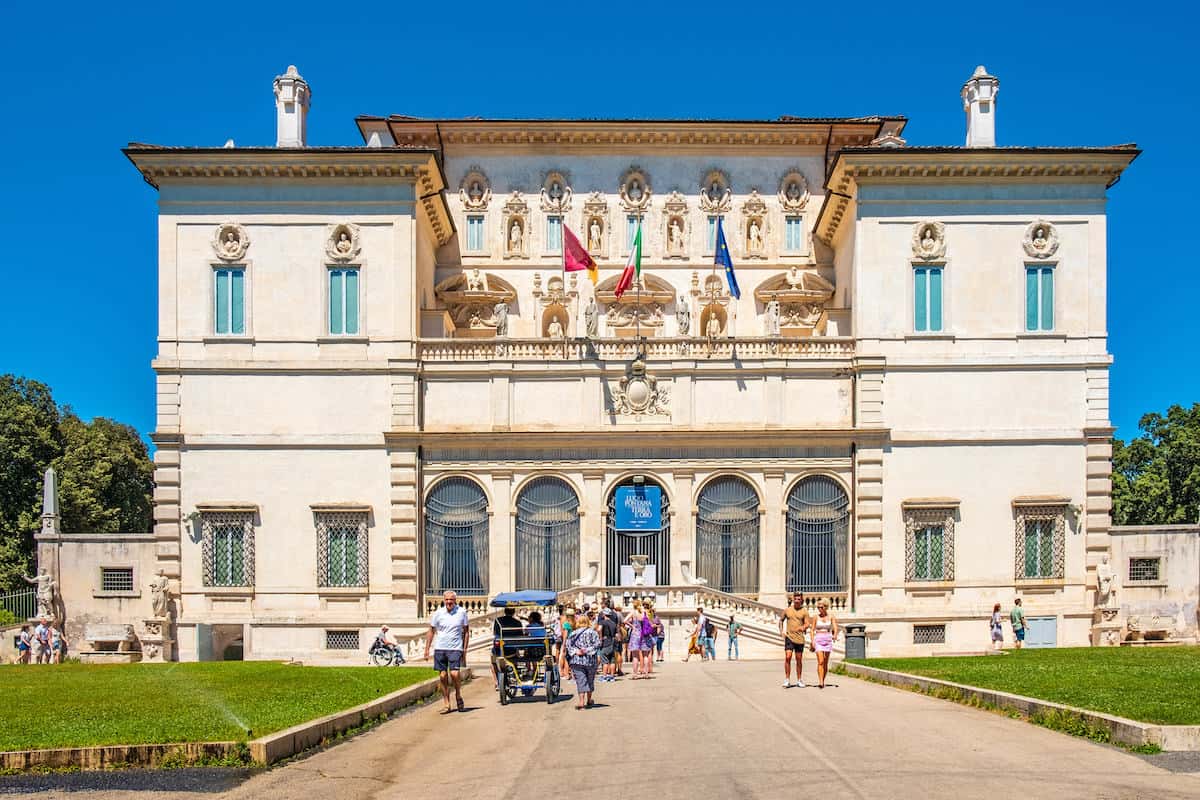
The best gallery in Rome, the Borghese has an eclectic collection of priceless art pieces dating back to the 15th Century. Paintings by the likes of Caravaggio, Bellini, Rafaello, Rubens and de Messina, plus sculptures by Bernini and Canova line the walls and halls. All the pieces belonged to Cardinal Scipione, the nephew of Pope Paul V who lived between 1579 and 1633.
The collection of artwork displayed here is absolutely stunning, displaying the highlights of Italian artistic culture from the renaissance to now. The best part about visiting this unique gallery, is that they only allow 360 visitors in the building at all times, so it never has any obnoxious or distracting crowds. If you’re an art lover visiting Rome, this gallery has to be your first port of call.
Included with:
- Omnia Pass
- Rome Tourist Card
- Turbo Pass
Capitoline Museums
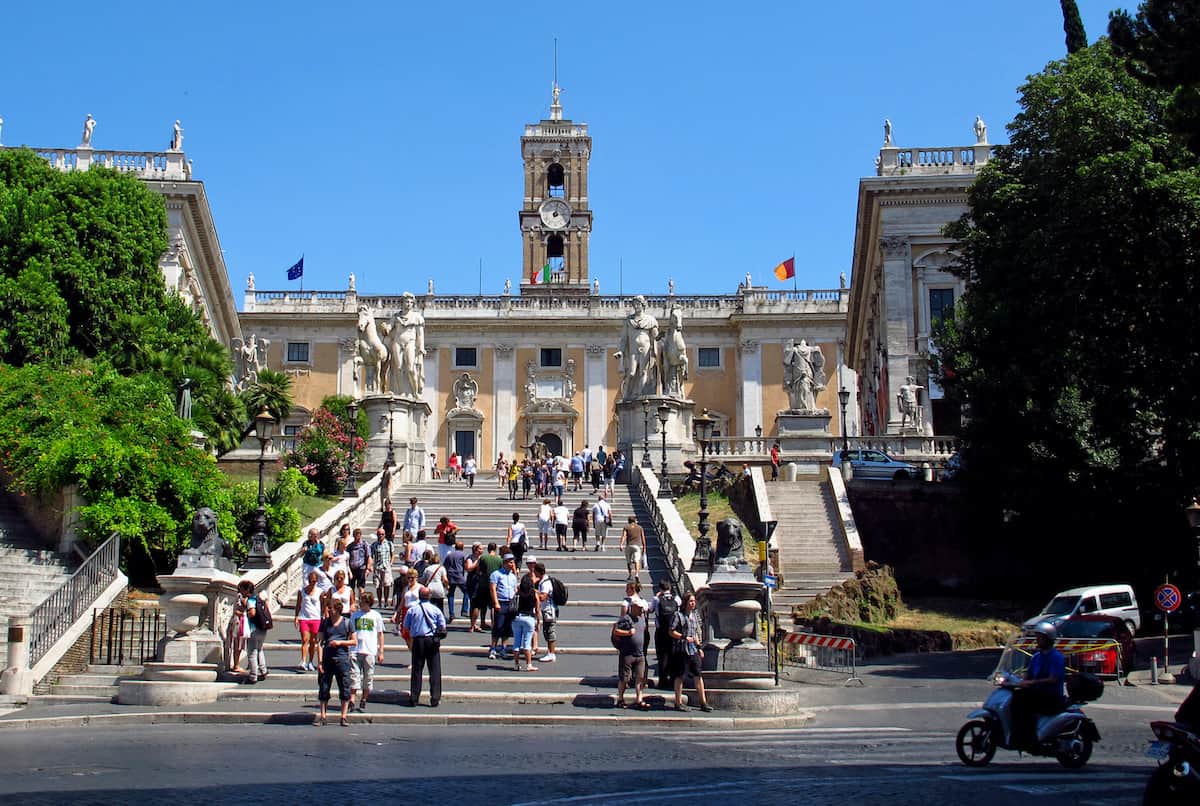
Considered by many to be one of the world’s first museums after Pope Sixtus IV donated bronze statues to the people of Rome in 1471, the Capitoline Museum buildings are exhibits in themselves. Home to the most iconic bronze statues in European history, the Roman symbols the Capitoline Wolf and the Equestrian Statue of Marcus Aurelius, the museums are testament to the city’s history. The Palazzo dei Conservatori serves as the main house of treasures to the Capitoline. The Capitoline is viewed, along with the Galleria Borghese and the Vatican museums, as the three essential museum visits on a short stay in Rome.
One of the most overlooked parts of the Capitoline, is the rooftop restaurant which has incredible views of the city. I would definitely recommend it!
Included with:
- Roma Pass
- Omnia Pass
- Turbo Pass
Galleria Nazionale d’Arte Moderna
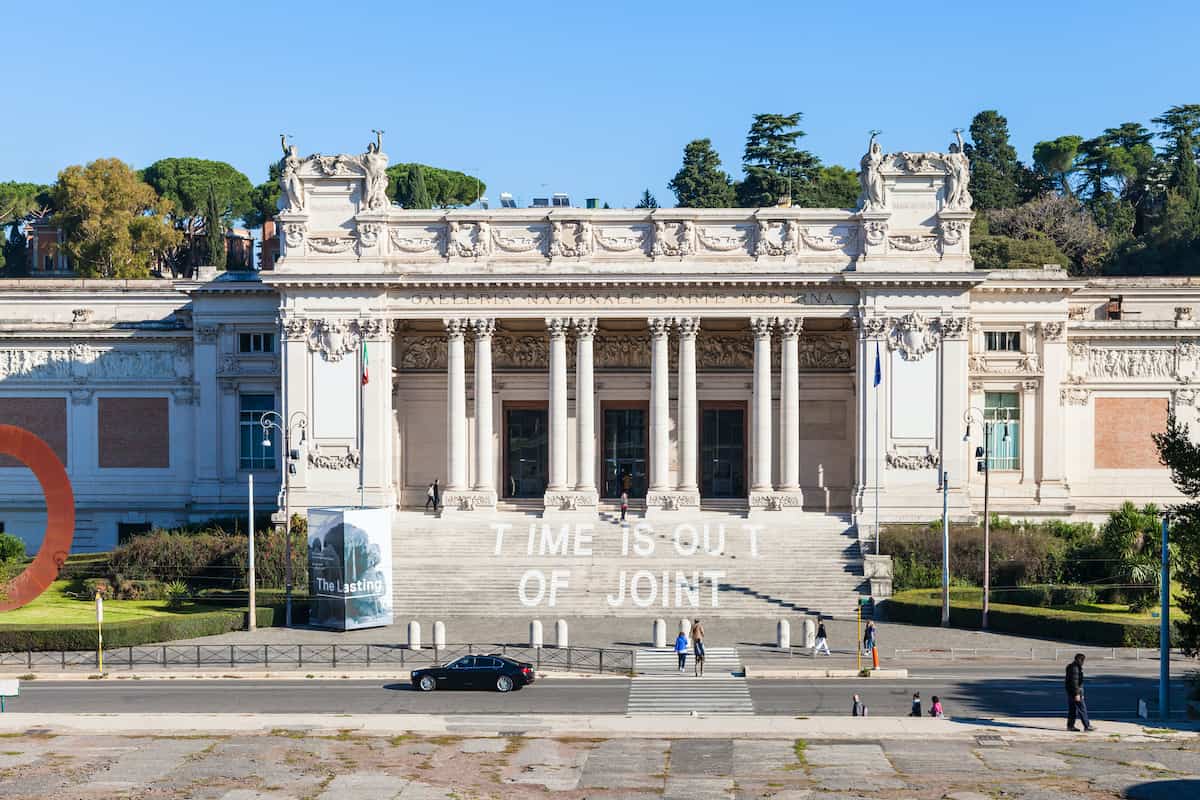
Sometimes referred to as GNAM, this gallery contains a collection of Italian art from the 19th and 20th centuries. Not only that, but it has an extremely bucket-list-worthy smaller collection of modern and contemporary art by international artists. Some of the works displayed at the GNAM include paintings from the likes of Cézanne, Degas, Duchamp, Eckersberg, Klimt, Kandinsky, Mondriaan, Klein, Monet, Rodin, Vincent van Gogh and Jackson Pollock.
Perfect for admirers with a more modern sensibility, it champions modern Italian art whilst also exhibiting household international names. Look for this museum when you’re looking to get away from the crowds.
Included with:
- Roma Pass
- Omnia Pass
National Roman Museum
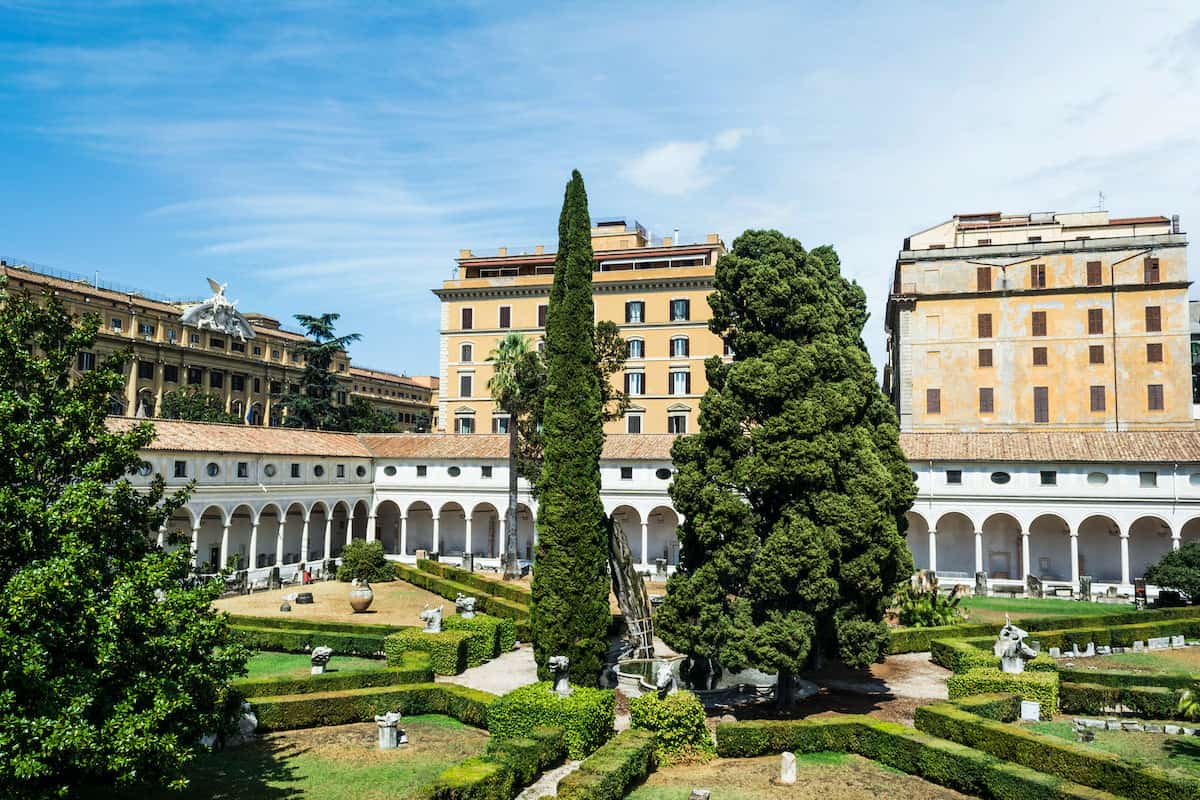
For those who love to divulge in ancient history and archaeology, the National Roman Museums dotted across Rome are all perfect for you. The Baths of the Diocletian, the Palazzo Altemps, Crypta Balbi, and the pièce de résistance; the Palazzo Massimo Alle Terme. All of these galleries, crypts and palaces fall under the umbrella of ‘National Roman Museums’, so you buy just the one admission ticket to access all four areas.
The Villa Farnesina houses incredible Renaissance-era frescoes, and is considered one of the greatest creations of the Renaissance era. The Baths of the Diocletian were completed in 306 A.D. and were the largest imperial baths in Italy with a capacity of 3,000. The Crypta Balbi and Palazzo Massimo feature famous Greek and Roman Sculptures, high reliefs, sarcophagi, frescoes and mosaics from ancient history,
There’s so much history to dive into with the National Roman Museum, you’ll find it difficult knowing which parts of the museums to prioritise.
Included with:
- Roma Pass
- Omnia Pass
- Rome Tourist Card
- Turbo Pass
Palazzo Barberini w/ Capuchin Crypt
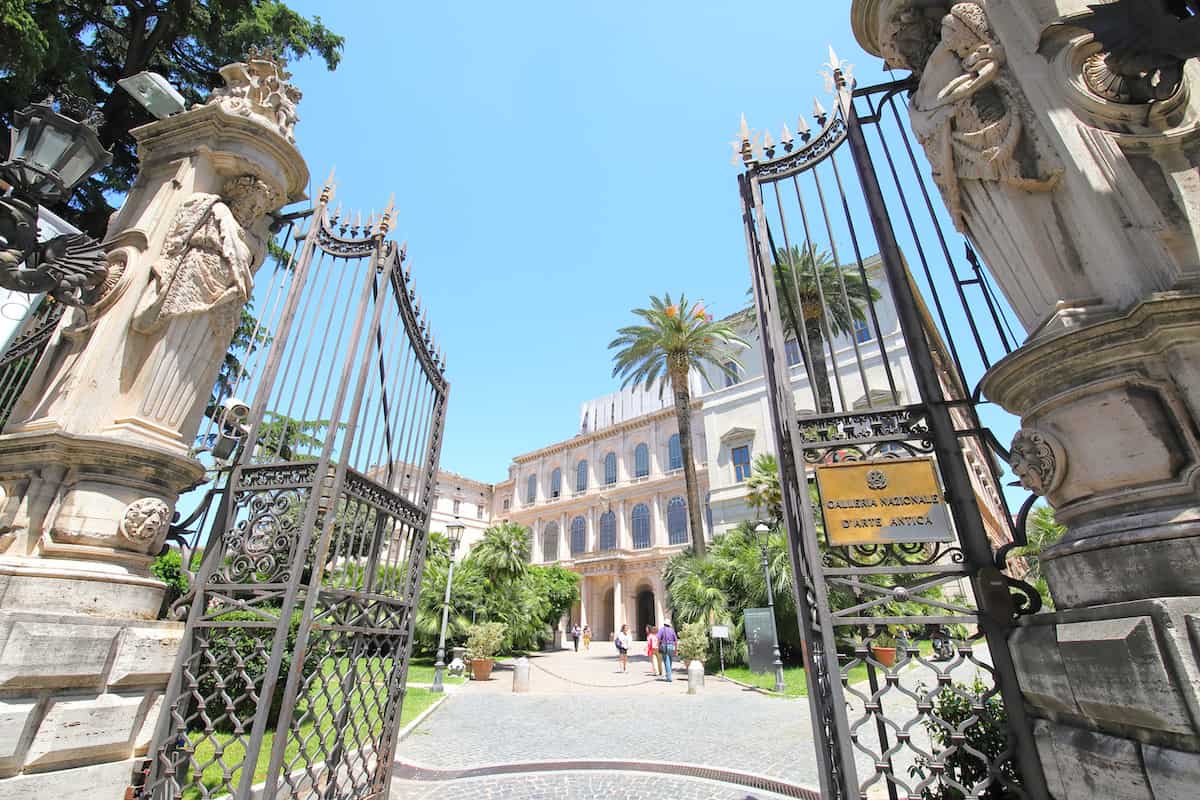
Just a few minutes’ walk away from the Trevi fountain is one of the most underrated museums in Rome: The Palazzo Barberini. Its Italian name, Galleria Nazionale d’Arte Antica, makes it sound like any other museum in Rome: full of old art. But this common misconception undermines not just the incredible collection it holds, but the palace in which the gallery is held. The palazzo itself is a 17th century manor house that held the Barberini family and was originally purchased as land by Maffeo Barberini, who became Pope Urban VIII. The palazzo is simply stunning, so it acts as the perfect backdrop for a collection of art that spans centuries.
Highlights at the Palazzo Barberini include Raphael’s portrait La Fornarina, Caravaggio’s Judith Beheading Holofernes and a Hans Holbein portrait of Henry VIII.
If you’re within the Piazza Barberini, you could make a quick visit to the Capuchin Crypt only a couple of blocks away. It isn’t part of the Palazzo, but it’s within its vicinity. If you are to visit any crypts or catacombs in Rome, you definitely need to give this a try. Containing the remains of approximately 3,700 Capuchin friars buried by their Order. The soil in the ground around the sight was imported from Jerusalem by Pope Urban VIII himself. Do not, under any circumstances, bring small children when visiting the Capuchin Crypt. The ‘crypt of pelvises’ is the highlight of the attraction.
Palazzo Barberini included with:
- Roma Pass
- Omnia Pass
- The Capuchin Crypt isn’t included with any pass.
MAXXI
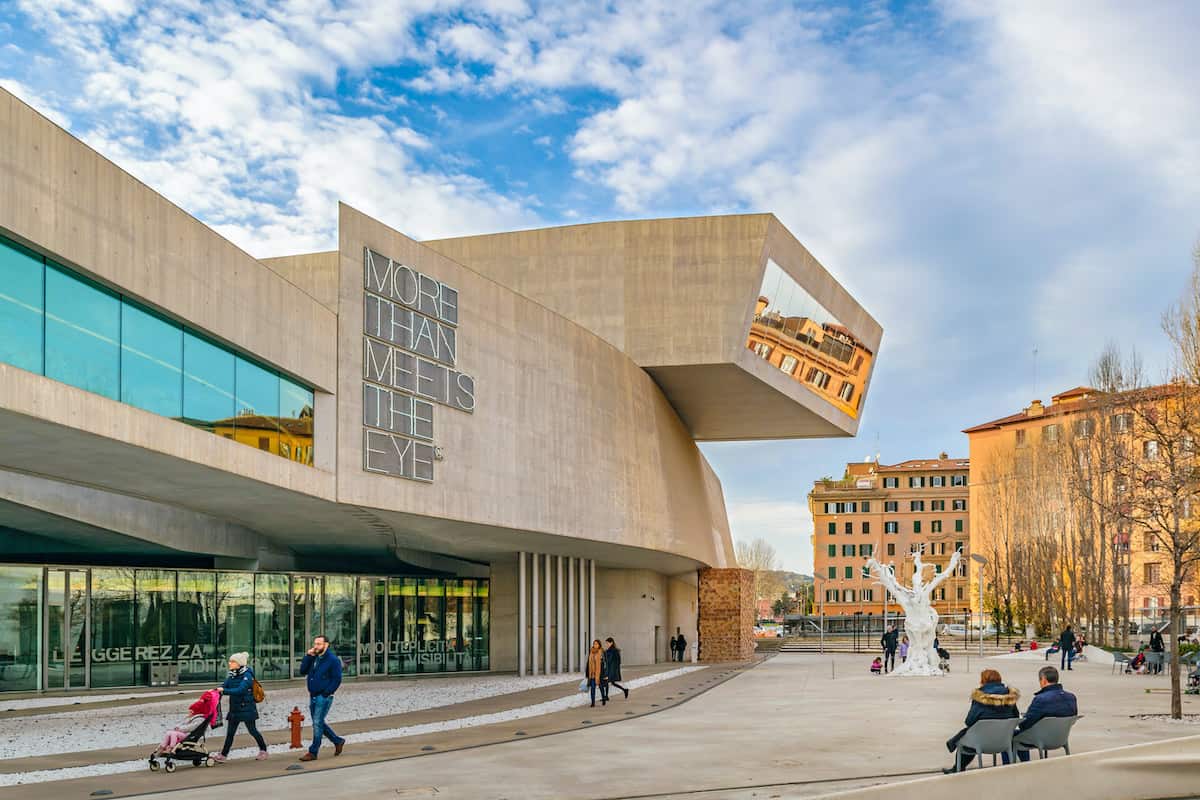
The museum of 21st Century arts holds artworks created within our century. It’s an escape from the incredible amount of historical museums that literally line the streets, so it’s definitely worth a visit for those that have been to all the essential museums. Built on the site of a former army barracks, the design of the building was given to competition winner Zaha Hadid. Not only does it contain 21st century artworks, but there’s a whole museum dedicated to architecture as well.
With projects in collaboration with Google, MAXXI has many different interactive experiences, virtual tours and interesting exhibitions. Not only does it give a voice to more recently made art, but it also supports up and coming artists with educational programs and workshops.
Many people love to visit this museum, even if it’s for the incredible building designed by Hadid.
Included with:
- Roma Pass
- Omnia Pass
Centrale Montemartini
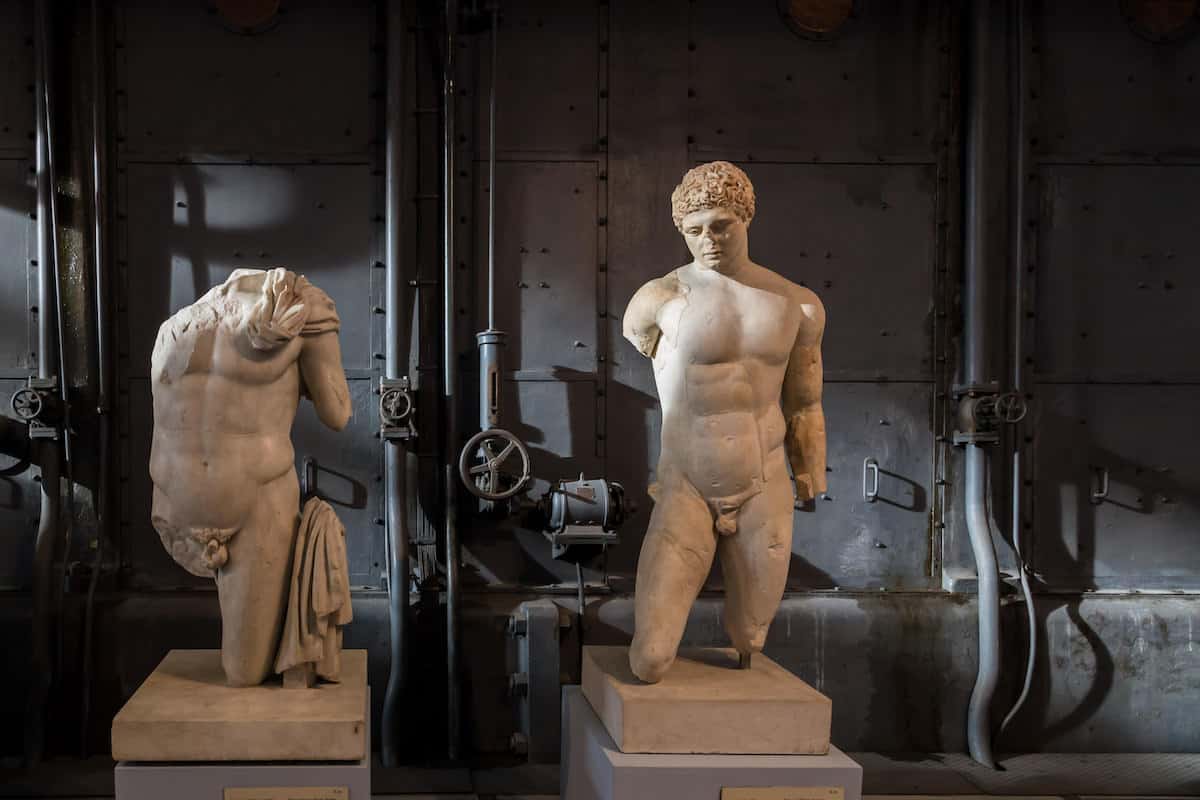
This is a truly unique experience in the heart of Rome. Ancient historical marble sculptures borrowed from the Capitoline Museums are displayed in a derelict power station. The first public power station opened in Rome, it now houses hundreds of Roman sculptures in a truly unconventional curation. Diesel engines installed during Mussolini’s time, Roman-era sarcophagi, water extraction pumps and sculptures of Venus.
I can’t think of another museum in Europe that puts this much of a jarring juxtaposition in its curation, and it’s just remarkable to see.
Included with:
- Roma Pass
- Omnia Pass
Museo Nazionale Etrusco di Villa Giulia
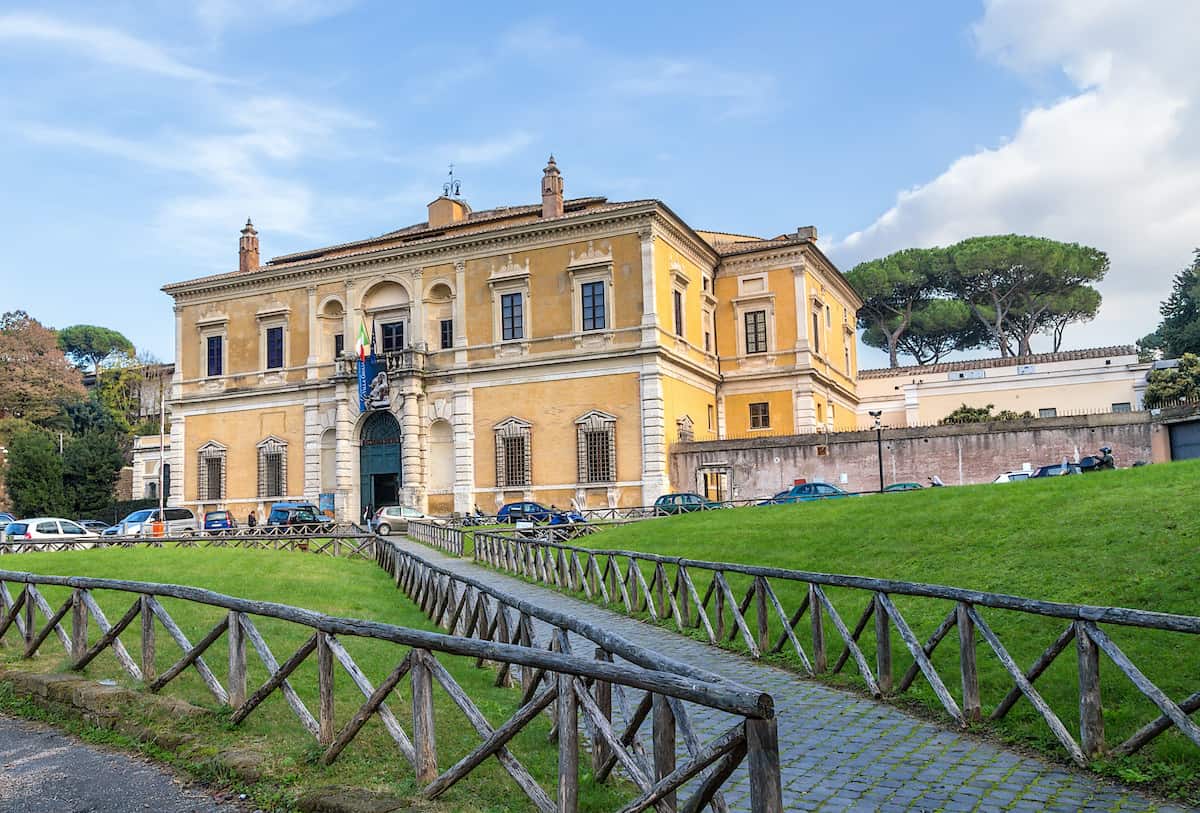
Set inside a 16th Century villa owned by Pope Julius III, this incredible museum houses Italy’s best collection of Etruscan art and Pre-Roman treasure. Must-sees include a polychrome terracotta statue of Apollo from a temple in Veio, and the 6th-century-BC Sarcofago degli Sposi (Sarcophagus of the Betrothed), found in 1881 in Cerveteri. Not many visitors to Rome are even aware of the existence of the Etruscans, but they are as much a part of Italian history as the Romans and the Catholics.
Included with:
- Roma pass
- Omnia Pass
MACRO
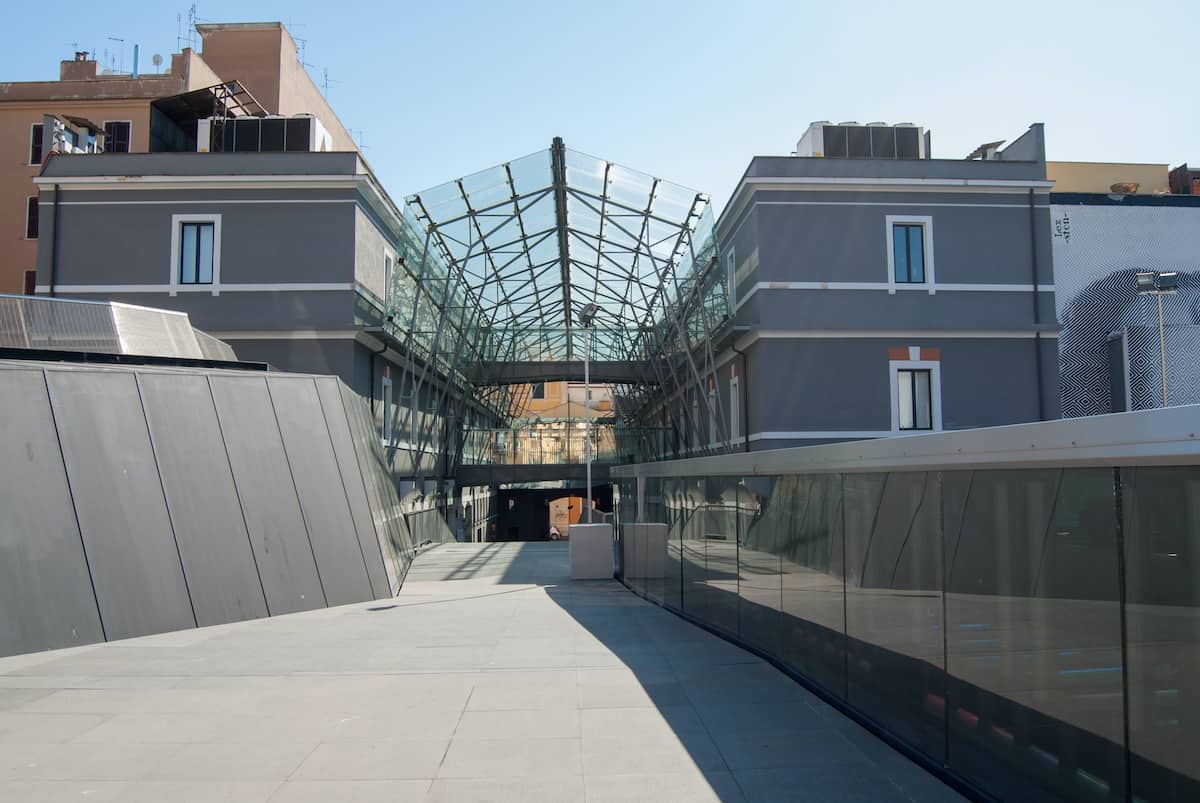
Rome’s MACRO opened in 2002. Now newly refurbished with some brilliant new additions, this ultra-chic contemporary arthouse is set inside an old Peroni brewery. The museum is completely free to the public, so if you’re wanting to get the most out of your stay with the least amount of spending, this is the museum for you.
Free to the public.

